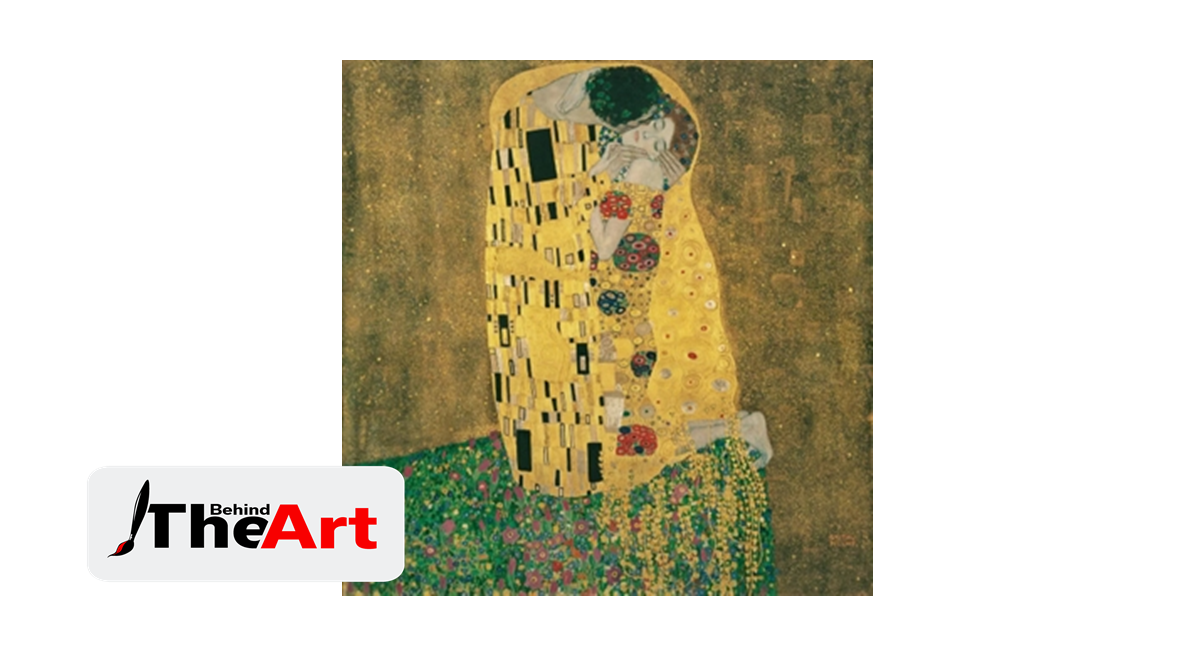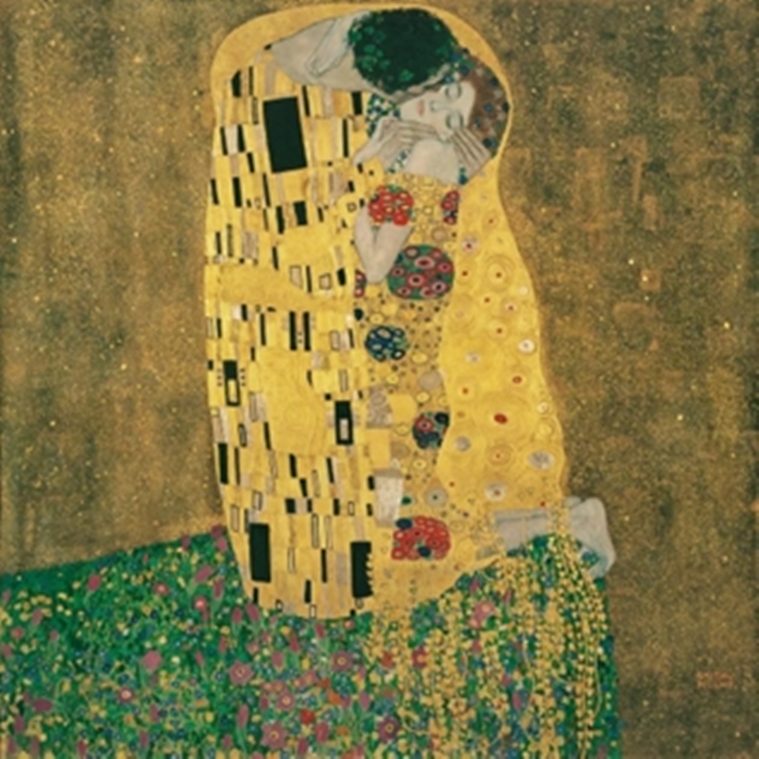 Austria’s king purchased the painting for a whopping sum of 25,000 crowns (around $250,000 today) before the exhibition even ended. (Credit: belvedere.at)
Austria’s king purchased the painting for a whopping sum of 25,000 crowns (around $250,000 today) before the exhibition even ended. (Credit: belvedere.at)Considered one of the most erotic pieces of artwork, ‘The Kiss’ continues to be one of the most visited paintings in the world. It currently hangs in Österreichische Galerie Belvedere museum in the Belvedere, Vienna, and was made using oil-on-canvas with added gold leaf, platinum, and silver by the Austrian Symbolist painter Gustav Klimt in 1907-1908. The painting gained popularity after it was exhibited in 1908, at Vienna’s annual “Kunstschau Wien” (art and craft exhibition). Austria’s king purchased it for a whopping sum of 25,000 crowns (around $250,000 today) before the exhibition even ended. The sale price was five times higher than that of any artwork previously sold in Vienna. This of course is nothing compared to Klimt’s painting Adele Bloch-Bauer I which sold for $135 million in 2006. How did Gustav Klimt’s ‘The Kiss’ spark a sexual revolution in art? Why is the painting so iconic?
The story behind the art
Love, sexuality, and intimacy were common themes that Klimt used to incorporate into his artworks. The Kiss depicts a couple embracing each other, their bodies entwined in a gorgeous robe decorated in a style influenced by contemporary Art Nouveau. Art scholars claim that the painting depicts his companion Emilie Flöge but there is no real evidence to back this theory. The Kiss is considered to be the final painting of Klimt’s ‘Gold Period’, during which he used gold leaves in his paintings. This practice reflected the strong influence of the gold-detailed religious art of the Middle Ages as well as the sacred works created by artists of the Byzantine Empire. As a result, some consider such paintings as “The Kiss” to be sacrilegious. The artist was influenced by the mosaics of San Vitale and it is said the reason why he used gold was because of his past – the metal work of his father and younger brother Ernst. Klimt’s father was a travelling artisan specialising in gold engravings. The artist’s interest in the Byzantine period also symbolised a move towards greater stability, through static, inorganic forms.
Subscriber Only Stories
 The Kiss is considered to be the final painting of Klimt’s ‘Gold Period’, during which he used gold leaves in his paintings. (Credit: belvedere.at)
The Kiss is considered to be the final painting of Klimt’s ‘Gold Period’, during which he used gold leaves in his paintings. (Credit: belvedere.at) Art historians have also suggested that the artist has depicted the ancient Greek tale of Orpheus and Eurydice in this painting. He is showing the exact moment when Orpheus turns around to caress Eurydice and loses his love forever. In the painting, the woman being held is slightly translucent, indicating a fading away or disappearance – just like how it happens in the story.
Hidden erotic messages
The question remains – why is this artwork considered to be sexual? Both figures are covered with a robe and there is no nudity. However, the post-Victorian society of the early 1900s saw this painting as pornographic simply because of the symbolism. The artist suggests what lies underneath the robe. There is also a pattern of erect rectangles that covers the man and circles and ovals decorate the woman which symbolises a vaginal halo. The flowers that cascade down the woman’s side were seen as a symbol of sperm, indicating that climactic ecstasy has just passed. The way the woman is craning her neck and closing her eyes was again perceived as sexual ecstasy. Some historians perceive that the woman is attempting to pull away from the man, and the man is trying to overtake her. This represents Klimt’s reputation as a Casanova. Several people thought his drawings and paintings were misogynistic while others thought he portrayed his women in an angelic manner. The Kiss continued to shock viewers for decades as no one in that era was used to seeing such physical intimacy being showcased in public. The fact that people were convinced that the man in the painting was Klimt himself and the woman his lover, made it even more scandalous. It was considered to be near obscene for a man and woman to be in such close contact especially when they were unmarried. When Klimt died in 1918, at the premature age of 55, several unfinished works of a strikingly sexual nature were found in his studio. How they were perceived then is unknown but the world was not used to such erotic artworks.
Klimt masterfully depicts the emotions of two lovers in this painting. There is carnal desire and passion evident in the way the two lovers are embracing each other. However, it is not just the lovers that make this piece of art so iconic. The artist’s use of gold makes the painting timeless and immortal. It is perceived as a modern icon version of religious artwork. Thanks to his father’s occupation as a goldsmith, Klimt learned a lot about how to make use of the element. The shimmering background that adorns the lovers in The Kiss still captivations millions of visitors to Vienna to this day. As far as love is concerned, it is a theme that has no expiration date and this is why lovers across the world appreciate and value this masterpiece.
Next Up in Behind the Art: Why is Leonardo da Vinci’s The Last Supper so important? What are the hidden messages in the artwork that still shock viewers?
📣 For more lifestyle news, follow us on Instagram | Twitter | Facebook and don’t miss out on the latest updates!